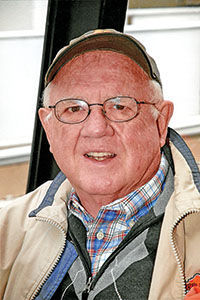If you happen to be a farrier with your own X-ray machine, make sure you’re legally using it in your footcare work. Otherwise, you may be violating your state’s veterinary practice laws when it comes to what you do with the information gleaned from radiographs.
I bring this up because I recently read an article that appeared in an American Association of Equine Practitioners (AAEP) report covering the scientific program from their recent annual meeting that was mailed with a recent issue of The Horse magazine.
The article expressed the views of the AAEP President Jeff Blea, who is a racetrack practitioner and a partner in VonBluecher Blea, Hunkin, Inc., Equine Medicine and Surgery in Sierra Madre, Calif.
In the article, he described a number of the challenges facing AAEP members during the coming year that include legislative issues, dealing with equine welfare and veterinary practice, uniform medication reform in racing and evolving veterinary business practice models.
Scope Of Practice Concerns
In addition, Blea described several “scope of practice” issues that may represent the biggest challenges facing the equine industry and impact the practice of veterinary medicine. He listed several concerns that may be illegal and place the health of the horse in danger:
- Farriers taking radiographs and providing diagnosis and treatment.
- Lay dental care providers that offer complicated equine tooth work without proper training or the use of proper aesthesia.
- Pharmacies providing medication to horse owners without a legal prescription and the lack of a valid veterinarian, client and patient relationship.
Avoid Diagnosis
It’s not against the law for a farrier to own and use an X-ray machine in their hoof-care work. But most state veterinary practice acts spell out that veterinarians are the only folks who can utilize radiography data for diagnosing a health care concern.
In a somewhat related area of animal health professionalism, equine massage therapists in Arizona are being accused of violating the state’s veterinary practices act. Several other state veterinary groups over the years have attempted to rein in equine dental technicians, massage therapists and even horseshoers.
Some protection for farriers is offered by the American Veterinary Medical Association model practice act that is followed in a number of states. Even though the language in the model act exempts folks lawfully engaged in the art or profession of farriery, it doesn’t define what is covered.
Unfortunately, the Arizona veterinary practice statute does not include the AVMA recommended exemption language for farriers.
So farriers beware of how you use information that you learn from looking at radiographs. You don’t want to have to deal with a cease-and-desist order that arrives in your mailbox from the state’s veterinary practices board.







